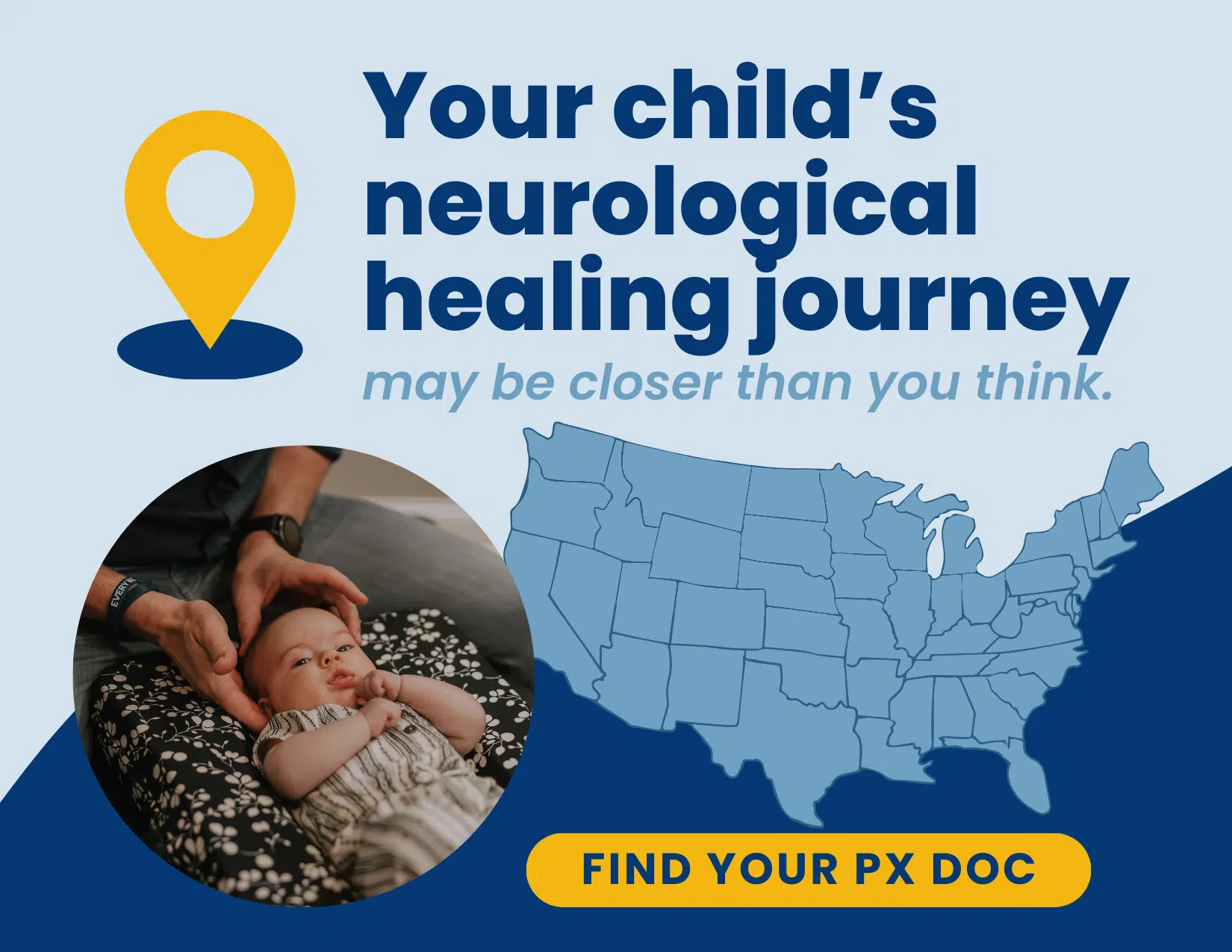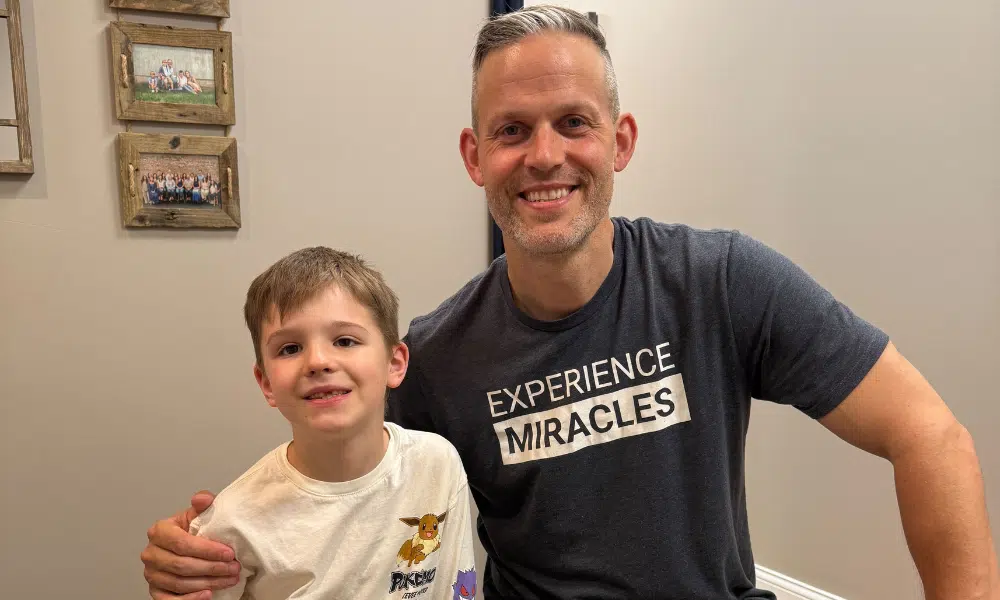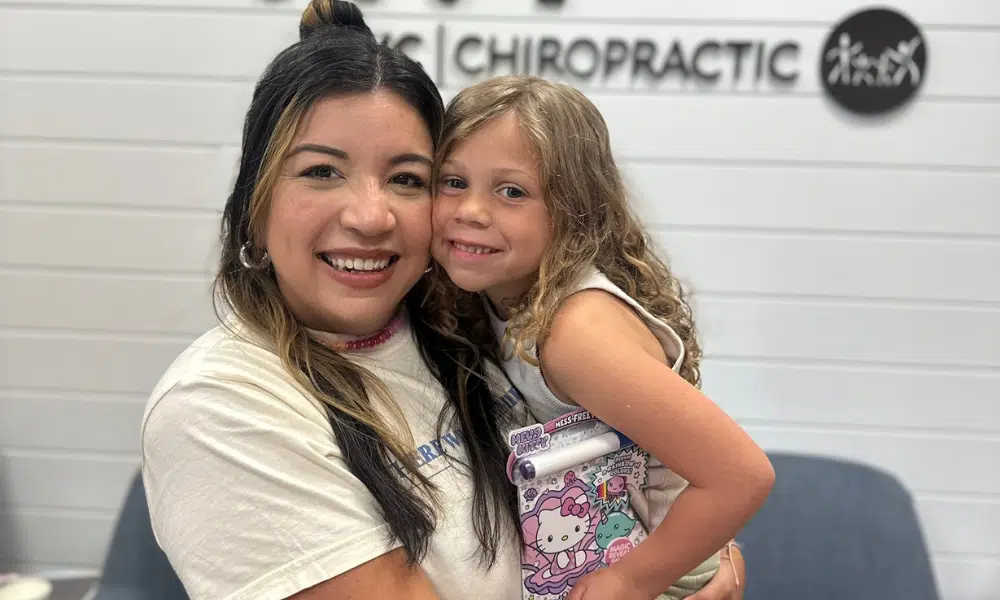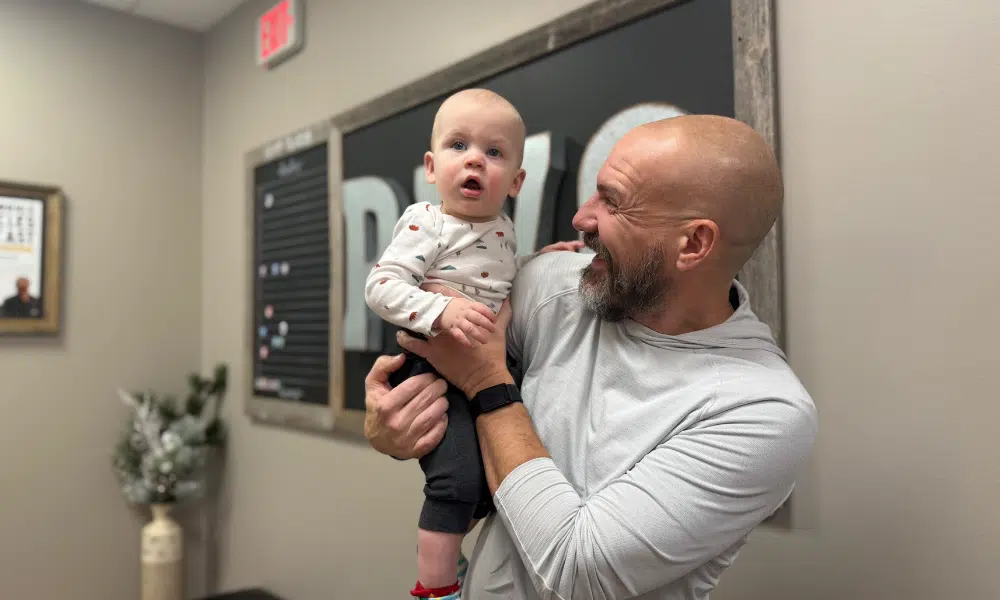Over the past two decades, autism diagnoses have increased at an astonishing rate. According to the CDC, the prevalence of Autism Spectrum Disorder (ASD) among children in the United States has risen significantly over the past few years. The study reveals that 1 out of every 36 children in the country is now diagnosed with ASD, marking a significant increase from the 2021 estimate of 1 in 44.
As autism identification rises, more parents find themselves attempting to understand diagnostic terminology, decipher evaluation results, and determine the best next steps to support their child. Yet despite autism’s increasing prevalence, public knowledge of critical details like the diagnostic process often remains limited.
In this article, we’ll explain the autism diagnostic criteria set forth by DSM-5, the prevailing “gold standard” for assessing Autism Spectrum Disorders, and helpful tools for advocating for your child effectively. We’ll also explore how Neurologically-Focused Chiropractic Care plans and root-cause-based approaches can offer renewed hope for families living with autism.
What is the DSM-5?
The DSM-5 is the Diagnostic and Statistical Manual of Mental Disorders, Fifth Edition. Published by the American Psychiatric Association (APA), this text is the primary reference clinicians use to guide psychiatric diagnoses and coding. It delineates the specific criteria utilized to categorize numerous mental health conditions.
The most current edition, the DSM-5, was released in 2013 after a 14-year revision to incorporate emerging research. However, the DSM has faced criticism—only a fraction of the contributors worked outside academic or clinical psychiatry during the development stages.
Most notably, 69% of DSM-5 committee members held pharmaceutical industry ties, and this conflict of interest led even the National Institutes of Mental Health to withdraw funding support in 2013 for the DSM-5 weeks before publication. Such biases help explain why the DSM adopts more of a “labeling” rather than a patient-centered approach.
While the DSM provides standardized criteria for evaluation, parents must remember that this guide emerged from a system focused more on managing symptoms via therapies and medication rather than catalyzing children’s development, function, and quality of life.
Overview of the Autism Diagnostic Criteria Categories
The DSM-5 defines Autism Spectrum Disorder into two main categories, labeled A and B, which have ten items each. To receive an autism diagnosis, your child must meet autism diagnostic criteria within all three of the “A” subsets and two of the four “B” criteria.
Additionally, children must exhibit symptoms early on in life (Criterion C) with significant impacts across settings like home, school, and social interactions (Criterion D). Finally, autism must be distinct from an intellectual disability (Criterion E), although the two conditions commonly co-occur.
The autism diagnostic criteria categories include:
Category A: Restricted & Repetitive Behaviors
- A1. Deficits in social-emotional reciprocity (abnormal social approach)
- A2. Impaired nonverbal communication (eye contact, gestures & expression)
- A3. Difficulty developing relationships (adjusting behavior with others)
Category B: Restricted & Repetitive Behaviors
- B1. Stereotyped motor movements (simple tics, repetitive object use)
- B2. Rigid adherence to routines and rituals (distress with change)
- B3. Highly fixated interests (preoccupied with unusual items/topics)
- B4. Reactivity to sensory input (sensitivity or fascination with stimuli)
Category C: Symptom Onset During Early Childhood
Category D: Significant Impairment in Daily Functioning
Category E: Distinct from Intellectual Disability
The DSM-5 criteria superficially describe behaviors linked to autism. But these outward symptoms stem from deeper physiological roots—namely, nervous system dysregulation. The criteria merely touch surface manifestations of imbalances set in motion from “The Perfect Storm” in early development.
Autism Diagnostic Criteria A Explained
Category A within the autism diagnostic schema focuses specifically on social communication deficits. Clinicians evaluate three areas of challenge to determine alignment with Criterion A guidelines:
A1: Social-Emotional Differences
The first item addresses deficits in social-emotional reciprocity – ranging from abnormal social approach and failure of back-and-forth conversation to disinterest in sharing interests or emotions and problems initiating interactions.
For example, children who mostly observe their peers rather than engage, pursue mostly parallel play, or prefer interacting with adults could meet these criteria. Other common challenges include struggling with greetings, launching into long monologues about special interests instead of two-way chatting, or confusion interpreting cues like sarcasm.
A2: Nonverbal Communication Challenges
Next, Criterion A looks at nonverbal communication used for social exchanges. This encompasses understanding and demonstrating expected eye contact, facial expressions, body language, gestures, and even tone of voice for communication.
Those with pronounced challenges here may avoid eye contact, display atypical expressions that do not match internal emotional states, demonstrate obliviousness to gestures, or lack vocal variation, conveying meaning beyond words spoken. For example, they may sound robotic or unusually formal when relaxed and casual interaction is expected.
A3: Difficulties with Relationships
Finally, subset A addresses deficits in forging and maintaining relationships appropriate for developmental levels outside caregiver interactions. It ranges from issues modifying behavior based on social dynamics to struggling with sharing imagination in play and problems making and keeping friends.
Many autistic children desire friendships but have difficulties navigating nuances like distinguishing friends from acquaintances, understanding exclusion from activities by peers, or when they’re being manipulated or treated unfairly by others. Interpreting levels of intimacy proves challenging.
Autism Diagnostic Criteria B Explained
While Category A focuses on interpersonal and communication challenges frequent in ASD, Category B hones in on behavioral patterns and tendencies. To meet DSM-5 criteria for autism spectrum, symptoms from at least two of the following four subsets must be present:
B1: Stereotyped Movements or Speech
Repetitive physical movements or speech patterns represent some of the most classically recognized autism behaviors. These may include simple tics like arm flapping, clapping, finger tapping, lining up objects in meticulous order, repeating words aloud (echolalia), or using stock catchphrases expressing excitement or interest rather than unique language.
B2: Rigidity to Routine & Rituals
Excessive adherence to routine and ritualized patterns is a frequently observed manifestation coping mechanism providing stability. Any interruption provokes extreme agitation. Behaviors include insisting on rigid daily schedules with precise timing, throwing tantrums if minor details change unexpectedly, eating the same breakfast daily for years, or compulsively following elaborate bedtime rituals.
B3: Highly Fixated Interests
Another signature quality in many individuals across the autism spectrum is the tendency to develop an all-consuming fascination with particular topics. For example, a child may intensely memorize every detail about vehicles, different world flags, timelines of natural disasters throughout history, or taxonomic classifications within the animal kingdom.
B4: Sensory Reactivity Challenges
Finally, Criterion B considers atypical reactivity to sensory aspects of the environment or unusual preoccupation with certain sensations that shape mood and behavior. This ranges from apparent indifference to pain, temperature, or physical injury to hypersensitivity producing fight-or-flight panic due to seemingly benign stimuli like labels in clothes.
This criterion can also encompass sensory craving actions like staring intensely at spinning objects, constantly sniffing, or feeling the textures of toys and surfaces.
Severity Levels & Required Support
Along with outlining diagnostic criteria, the DSM-5 introduced accompanying severity level ratings denoting the degree of support a child with autism may require. Specific ratings that can be given include level 1 (requiring support), level 2 (requiring substantial support), and level 3 (requiring very substantial support).
These levels are assessed separately for social communication difficulties described in Category A and restricted/repetitive behaviors from Category B. For instance, a child could qualify as level 1 for communication issues but level 2 for behavioral rigidity and sensory reactivity problems.
Understanding recommendations assists with developing custom care plans and directs parents on where to devote the greatest attention and how best to advocate for adequate school accommodations and access to additional therapy resources.
How is Autism Diagnosed?
It begins with general developmental screening during regular well-child visits from 18 months to 3 years old. If risks are identified, the pediatrician then refers them for autism-specific evaluation. This involves an autism specialist observing the child’s communication, behavior, development, and interactions across settings to determine DSM-5 alignment.
They integrate caregiver perspectives with their clinical observations while also administering various standardized tests:
- Autism Diagnostic Observation Schedule (ADOS-2)
- Autism Diagnostic Interview-Revised (ADI-R)
- Adaptive tests like Vineland-3 or ABAS-3
- Cognitive & IQ tests (e.g., WISC-V, Stanford Binet 5)
These instruments help assess social awareness, communication challenges, stereotyped interests, and repetitive behaviors central to an autism diagnosis. The specialist compiles clinical impressions with test data to determine diagnosis and severity ratings tied to support needs.
While these tools effectively categorize the level of traits and behaviors linked to autism, they provide little insight into the deeper root causes driving those outward symptoms. This gap means missed opportunities for personalized care that addresses underlying physiological factors rather than just crisis-managed surface behaviors.
The Root Cause: Nervous System Imbalance
While the DSM-5 criteria summarize patterns linked to autism, they fall pretty short of telling the whole story or identifying root physiological causes for the symptoms described. This gap often leads to inadequate solutions that only attempt to externally “manage behaviors” rather than catalyze development.
From the emerging research, we know autism—along with the overwhelming majority of pediatric health conditions—stems from imbalanced nervous system function disrupting optimal regulation, development, and coordination with other body systems. The DSM completely neglects this vital relationship.
Specific nervous system challenges like subluxation-induced interference, dysautonomia (sympathetic-parasympathetic imbalance), and poor vagus nerve tone tie directly to the brain’s social, communicative, digestive, and behavioral control centers. The cascade of external stressors, referred to as “The Perfect Storm,” leads to atypical neurological development.
Fortunately, providers can influence physiological roots rather than behaviors by addressing nervous system dysregulation through modalities like Neurologically-Focused Chiropractic Care. This catalyzes bodily systems, the gut-immune-brain axis, and child development itself.
Discovering Care, Not “Treatment”
Expanding the clinical picture beyond just DSM-5 criteria is vital for children facing developmental delays like autism that stem from physiological rather than psychological roots. If your child receives an ASD diagnosis, remember this offers merely a conceptual starting point. The most essential next step? Prioritizing the restoration of healthy nervous system function.
As you navigate effective care options, don’t just focus on the label. Direct efforts based on the child’s unique needs while also addressing identified root causes for those issues. In autism, look beyond genetics and “managing” symptoms.
One way to do this is by connecting with a local PX Doc for an INSiGHT Scan assessment. These assessments allow for the development of customized, cause-based care plans that target the root of nervous system imbalance. In this way, we can help children with autism reach their full potential.





